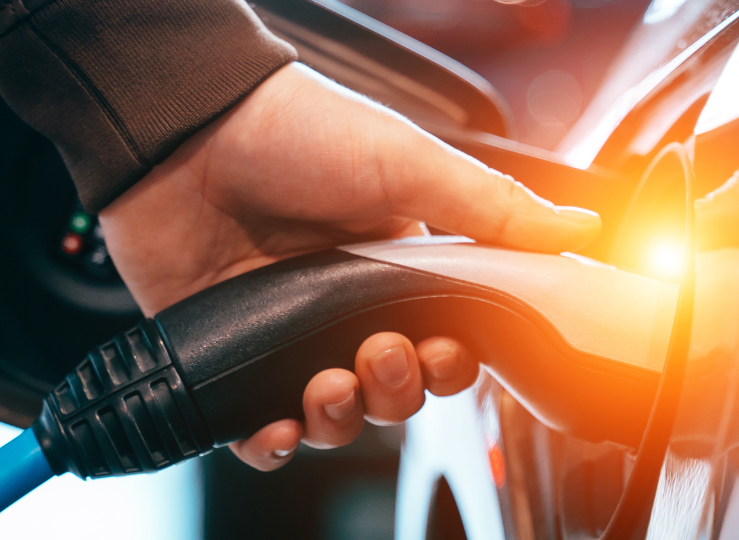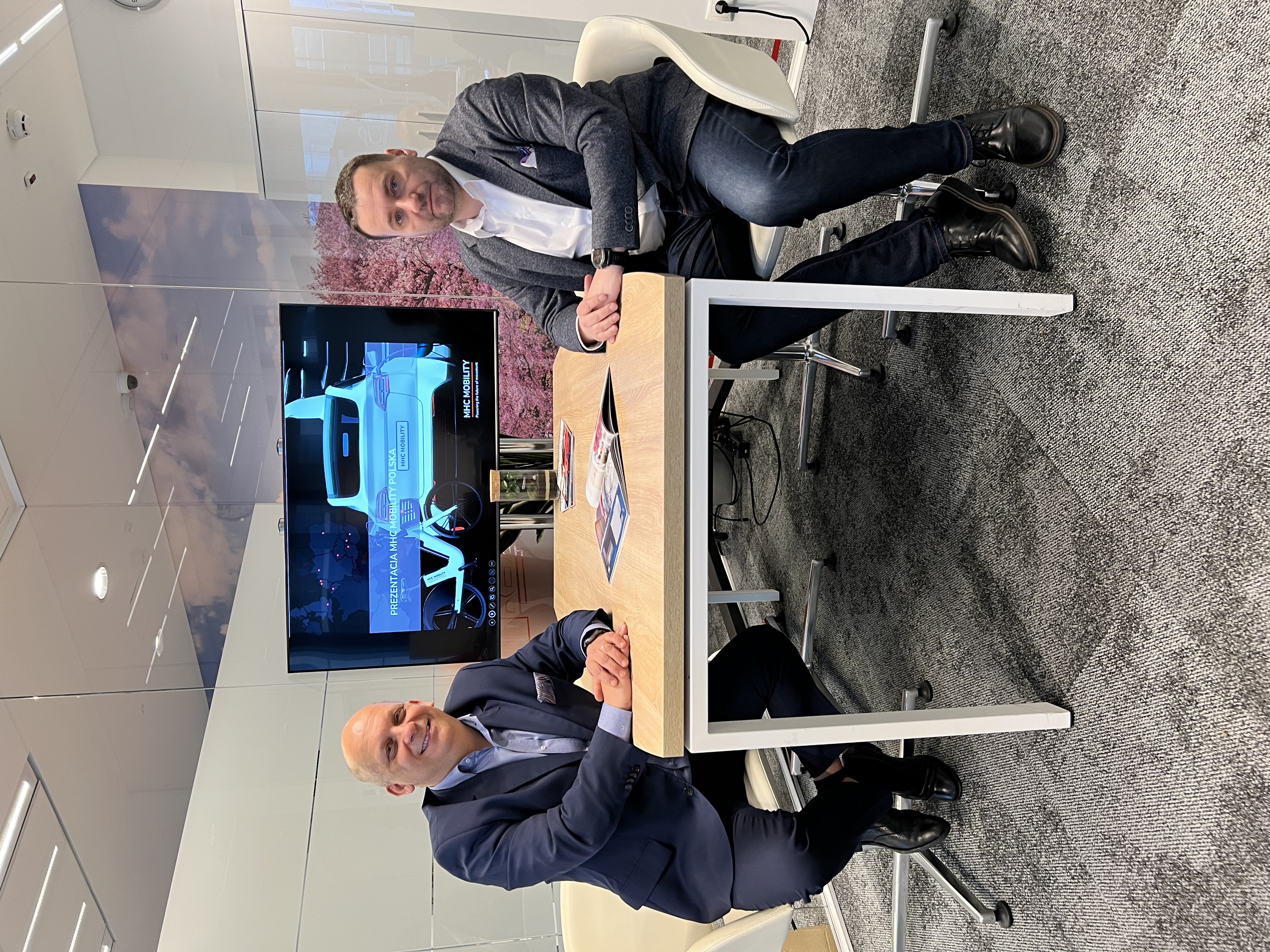Zero-emission cars in Poland and a vision for their future - a conversation between MHC Mobility's CEE Commercial Director Tomasz Piekarski and Elocity CEO Michał Baranowski.
Electromobility in Poland is still developing and the leap that has taken place is clearly noticeable. In the years to come, more and more people and companies will opt for zero-emission cars, whose development and functionality is much better than just a few years ago.
Tomasz Piekarski: What do you think the year 2022 will look like and what will it be like in terms of electromobility?
Michał Baranowski: From the point of view of a person who manages a company that provides systems and actually builds infrastructure, I see an increasing awareness and customer needs. Zero-emission car fleets are being deployed more eagerly and the construction of a network of closed charging stations is beginning. The earlier years were characterised by scepticism, because no one believed in electric car technology and that charging stations could make money and that someone could one day successfully use an electric car in business. Today, I feel that this disbelief is behind us.
TP: We know for sure that the development of electromobility in Poland will happen, but it will proceed by leaps and bounds. This is influenced by the increasingly wide model range of cars available.
MB: It used to be that electric cars were either very tiny, urban, or there was something about them that made people feel somehow strange, so they couldn't quite meet customer requirements. What would induce an ordinary driver today to make the switch to an electric car? Price aside, the fact that, this car will be just as useful as a combustion car. It's not even a question of range, but, for example, of having a large boot or the parameters that an SUV or Sedan has. It's about the customer having a choice and making the decision so that their primary choice is not technology, but functionality.
TP: What do you think about the future of plug-in cars, or so-called PHEV-type technology. It is developing more and more slowly, while the growth rate itself has flattened out. The question is, is this a temporary trend or not?
MB: In my opinion, plug-in hybrid technology is in a sense no longer useful if ranges in electric cars approach 500 kilometres or more. Yet the industry itself should force a bit better, more optimal fuel consumption in plug-in hybrids. This can be done through certain driving modes. If the car knew I was going to be doing a lot of city driving, it could balance the use of electricity and petrol differently.
TP: So it is important to optimise the driving modes and the conditions in which the car is used.
MB: Today 30 kilometres is definitely not enough, but there are plug-in hybrids that cover distances like 80 kilometres, 100 kilometres, then the driver gets used to the fact that such a car needs to be charged. If you force a plug-in hybrid on someone, but they have no way of charging the car, then the real range is 15 kilometres. In that case it is money thrown down the drain.
TP: So let's move on maybe to the second topic, related to the one that intrigues me a lot, which is the development of technology, batteries, trends, ideas on how to develop these fuel cell solutions, how to deal with the limited access to rare earth metals. How do you see this happening? Recently, the concept of a cell that is based on a solid electrolyte is emerging. This is supposed to be the first step towards changing this traditional lithium-ion battery technology, i.e. based on expensive rare earth metals, as well as a liquid, acid electrolyte. The industry has prepared itself. Since last October, there has been news from car manufacturer Toyota, which has announced that it is starting to use this technology. What do you think of solid electrolyte battery technology?
MB: Any new technology if it brings something positive to the user, it helps the industry and that is the case here. Here we are talking about shorter charging, higher density, that is, less weight of the battery. Today, a driver who is used to filling up with liquid fuel says that it takes him 10-15 minutes, because you have to get out of the car, fill up, pay the bill - this process takes a while. Charging the battery limited to 15 minutes means that we spend the same amount of time at the station as if we were filling up with fuel, and that is already a big leap in quality.
TP: I hear this often from electric car users. I have noticed that they often state that the moment of charging the battery is very important. There is an optimum moment to stop and charge it. According to many users, it is better to do this sooner rather than later, that is, not to wait until the battery is already empty, because then the fast charging process is not efficient. It is better to do this when the discharge is at 50%. Add a dose of 20-30 KW and keep going. Do you also notice this and confirm it as an industry person?
MB: That would be the best charging, but if we know that we will drive 300, 350 or even 400 km on a single charge without any problems and then the car will stand for a few hours at a charging station, then there is no need to stop. It all depends on the journey. Of course, if we have the chance to allow ourselves to recharge halfway through, then by all means take advantage of it. On longer trips, whether they are business trips, journeys, going on holiday, it is good to plan the moment to charge and take into account situations such as a broken or busy station. However, I am of the opinion that the electric car should not rule us, i.e. force certain behaviours by force. This used to be the case. I remember how Tesla drivers commuting from Poznań to Warsaw used to charge their cars at farmers' homes because there was not enough grid. Those days are long gone, we have the necessary infrastructure, although not yet enough. There are not so many electric cars yet, so station occupancy is low, so the charging comfort itself is greater.
TP: Let's move on to infrastructure. Is indeed this insufficient charging infrastructure in Poland a hindrance? Do we have a mismatch between the infrastructure and the needs of users with electric cars in Poland?
MB: I have the impression that a little bit yes. It would be better if we had more super-fast chargers. This year will be a year of concrete planning. Nothing super new will suddenly happen here, because we have a subsidy programme in progress that started last year and ended very quickly. After which nothing happened for a long time. Those who want to buy chargers waited for the subsidies to come in or for their applications to be processed. This stagnated the market for us, as many people did not get any response to their applications for a long time. This was happening January 2022, the first dialogue with the fund started to appear in the holidays, so the implementation of these programmes will happen this year. We had a bit of an enforced hiatus because everyone was waiting for the money, because obviously nobody is going to invest their own money when you can get help from the state.
TP: Is Elocity also waiting for a grant?
MB: No, we don't have our own infrastructure, we don't build, we just provide the service, but our customers are waiting for the grant. So this is such a bit of a sore point... It was a very similar situation with the first 'MY ELECTRIC' applications, when applicants waited a long time for a response. If we want to move forward, such situations should not happen, but should run smoothly.
TP: If we look at the growth of charging points we can see that just two years ago there were about 3,000 charging points. Now this number is doubled.
MB: Hardly, installations for business customers have started to appear, with 20 to 50 charging ports in one car park. These are mainly business use fleets. Businesses such as warehouse operators, logistics companies or courier services, seeing the benefits if only financially, are very keen to switch to electrics. This is where this market is starting to take off. Making the decision to go zero-emission is a certain strategy for the development of transport within a company.
Companies recognising the advantages of zero-emission cars are increasingly willing to change their fleets, charging stations are being built and the infrastructure is expanding. These are changes that are leading us to a big leap, with everyone slowly starting to prepare for the change and getting used to the idea of owning an electric car. The next stage in this transition will be the emergence of zero-emission truck fleets, but that is a topic for another meeting.




